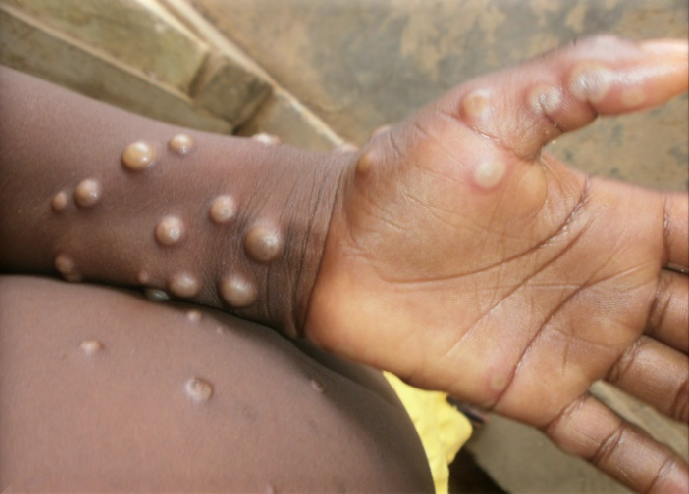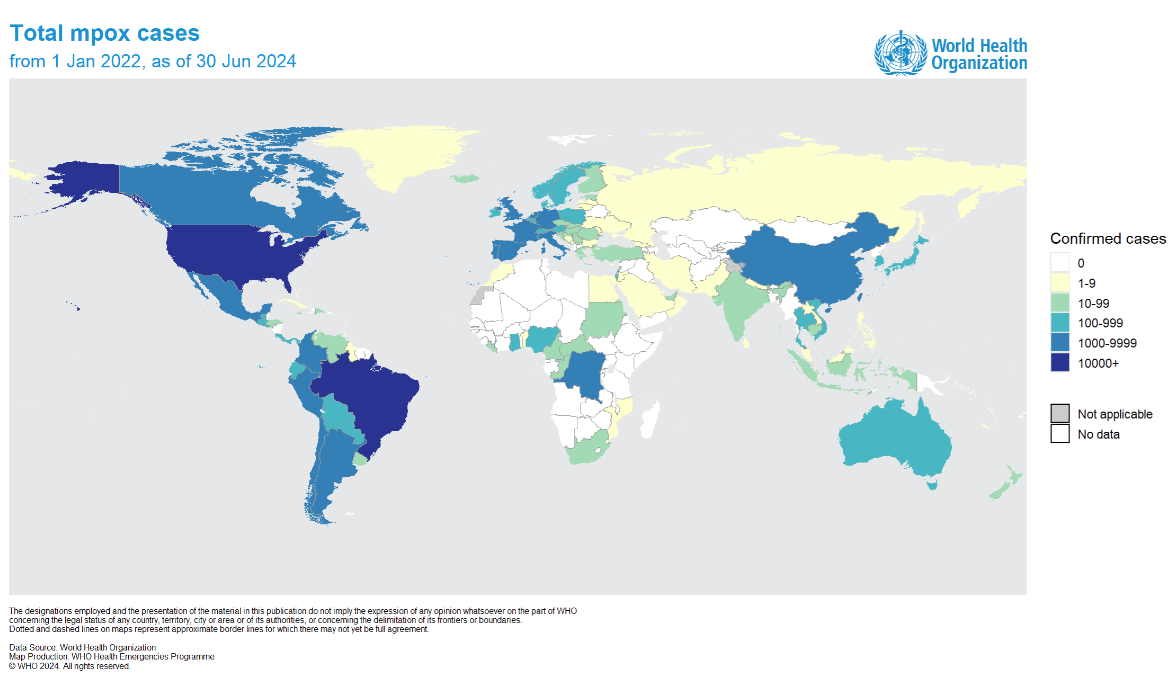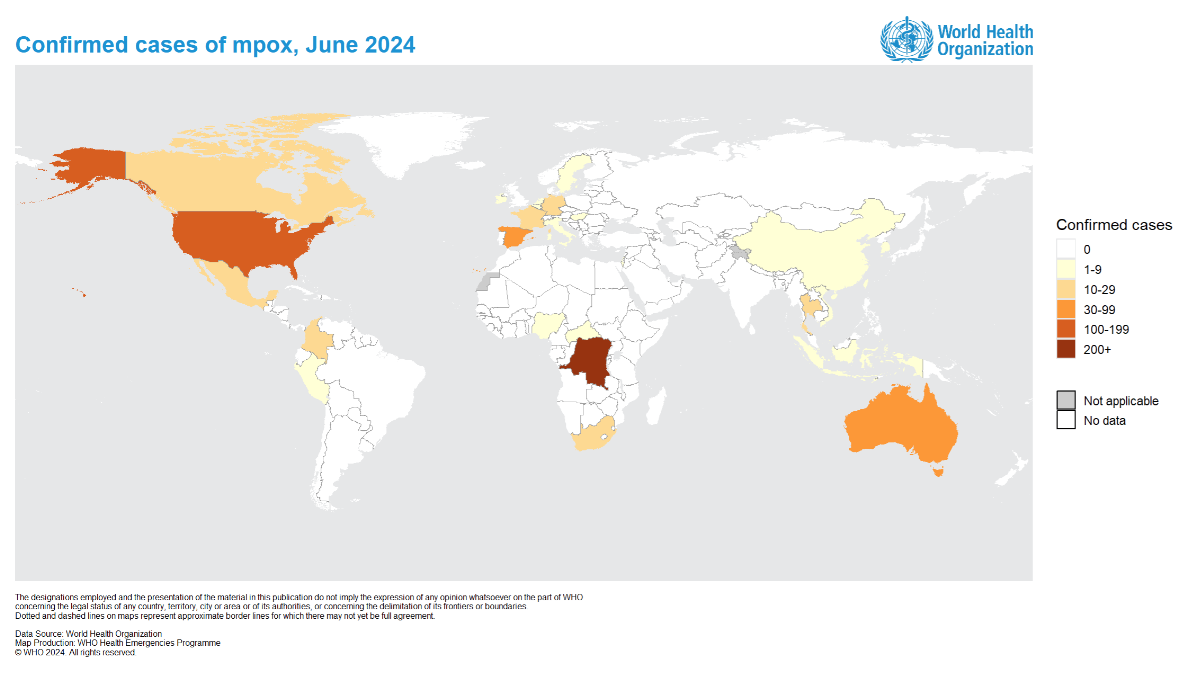Monkeypox (mpox) is an emerging infectious disease caused by the monkeypox virus, which belongs to the Orthopoxvirus genus. There are two distinct clades of the virus: clade I and clade II. Although monkeypox was first identified in humans in the Democratic Republic of Congo in 1970, it has primarily been confined to Central and West Africa. However, in recent years, cases have surfaced in non-endemic countries, including India, sparking concerns about the virus’s potential to spread more widely.
Transmission of Monkeypox
Monkeypox is primarily transmitted to humans from infected animals through bites, scratches, or during activities like hunting, skinning, trapping, cooking, or even playing with animal carcasses. Consuming infected animals is another potential route of transmission. Human-to-human transmission of the virus can occur through close contact with an infected person. This includes:
• Skin-to-skin contact (e.g., touching or sexual contact)
• Mouth-to-mouth or mouth-to-skin contact (e.g., kissing)
• Close face-to-face interactions (e.g., talking or breathing close to someone, which can result in the inhalation of infectious respiratory particles)
Additionally, monkeypox can spread through contact with contaminated items, such as infected sheets, clothing, or needles. Pregnant individuals who are infected may also pass the virus to their unborn baby.
Symptoms of Monkeypox
The incubation period for the monkeypox virus ranges from 5 to 21 days, with symptoms typically appearing within 7 to 14 days after exposure. Common symptoms include fever, headache, muscle aches, and swollen lymph nodes (lymphadenopathy). A distinctive rash usually develops, beginning as flat sores that evolve into blisters. These sores may be itchy or painful. The illness typically lasts between 2 to 4 weeks.In most cases, monkeypox resolves on its own without the need for specific treatment. However, severe cases can occur, especially in children, pregnant women, and individuals with compromised immune systems. Potential complications of monkeypox include secondary bacterial infections, respiratory distress, and, in rare cases, encephalitis.
Diagnosis and Treatment
Monkeypox is diagnosed through laboratory testing, specifically by PCR analysis of skin lesion material. Currently, there is no specific antiviral treatment approved for monkeypox. Management of the disease focuses on supportive care, including managing the rash and preventing complications. In severe cases, antiviral drugs may be considered under investigational use.
Prevention and Control of Monkeypox
Preventing monkeypox requires a comprehensive approach. In regions where the disease is endemic, reducing human contact with potentially infected animals is crucial. This can be achieved by avoiding the consumption of bush meat, practicing proper cooking techniques, and handling animals with appropriate protective measures. For healthcare workers and caregivers, strict infection control practices are essential to prevent the spread of the virus within healthcare settings.
Vaccination is a key strategy in preventing monkey pox. Vaccination is recommended only for individuals at high risk, such as those who have been in close contact with an infected person or belong to a group with a high risk of exposure to the virus. Mass vaccination is not currently recommended.
Public health education plays a vital role in raising awareness about monkey pox, particularly in endemic regions. Awareness on how to recognize symptoms, seek medical attention, and avoid high-risk behaviors can significantly reduce the spread of the virus. Additionally, regular cleaning and disinfecting of potentially contaminated surfaces and objects, along with proper hand hygiene, are crucial in preventing indirect transmission of the virus.
Conclusion
As monkey pox continues to emerge as a public health concern, understanding its transmission, symptoms, and prevention is critical. We urge everyone to remain vigilant and be aware of the signs of monkeypox. If you suspect you may have been exposed to the virus or are experiencing symptoms, seeking prompt medical advice is crucial. Timely diagnosis and appropriate guidance on treatment and isolation can help prevent further transmission and ensure the safety of both individuals and communities.


